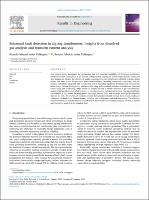Enhanced fault detection in zig-zag transformers: Insights from dissolved gas analysis and transient current analysis

View/
Author(s)
Arias Velasquez, Ricardo Manuel
Arias Velasquez, Renato Fabricio
Date
2025-02-12Subject
Metadata
Show full item recordPublisher
ScienceDirect
Journal
Results in Engineering
Abstract
This research article investigates the performance and fault detection capabilities of 35 zig-zag transformers connected to solar power plants in the medium voltage busbar, focusing on “dissolved gas analysis” (DGA) and fault diagnostics. Despite the absence of sudden disconnections, the transformers exhibited evolving failure modes. The study details the protection mechanisms employed, including overcurrent, overvoltage, and me chanical protections, integrated with a master trip system. Revealing significant deviations from normal levels before faults. Elevated hydrogen and methane levels, along with increased acetylene concentrations, indicated severe arcing and overheating, while treated oil samples showed a notable reduction in gas concentrations, underscoring the effectiveness of oil treatment in managing thermal and electrical stresses. This paper highlights the evolution of fault modes, including partial discharges, thermal faults, and arc faults, with specific diagnostic markers for each. The analysis of transient currents during faults indicated internal short circuits, leading to substantial mechanical and thermal damage, including core misalignment and tank deformation. The efficiency increases from 85.71 % in the detection with DGA to 91.43 % based on the combined analysis for DGA, comtrade and overcurrent analysis in the complete fleet.
Type
info:eu-repo/semantics/article
Rights
info:eu-repo/semantics/openAccess
Language
eng
Collections
- Derecho [29]

